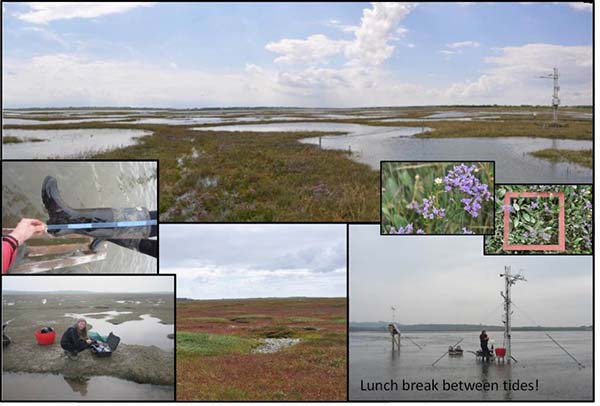Over the summer, the Eddy Covariance Team at the University of St Andrews has been busy collecting additional chamber CO2 flux data, aiming to quantify the response of the different mosaics of vegetation over the landward-seaward gradient to a manipulated range of light conditions.
At the end of July, Melanie Chocholek & Frances Pusch (intern) spent a very hot week on the Abbotts Hall saltmarsh collecting quadrat data from the landward, middle and seaward edges of the marsh, via mini transects that ran from the top of the marsh down onto the slumped runnel edges. They recorded CO2 fluxes, percentage cover and specific leaf area of the vegetation, which they subsequently harvested for leaf nitrogen analysis. This sampling strategy was then repeated for the Cartmel marsh in Morecambe at the end of August. Melanie and Graham Hambley (PhD students) adapted the sampling to capture the salt pans. It is planned that this data will be used for up-scaling and linking small scale biodiversity responses to the continuous eddy covariance data.

